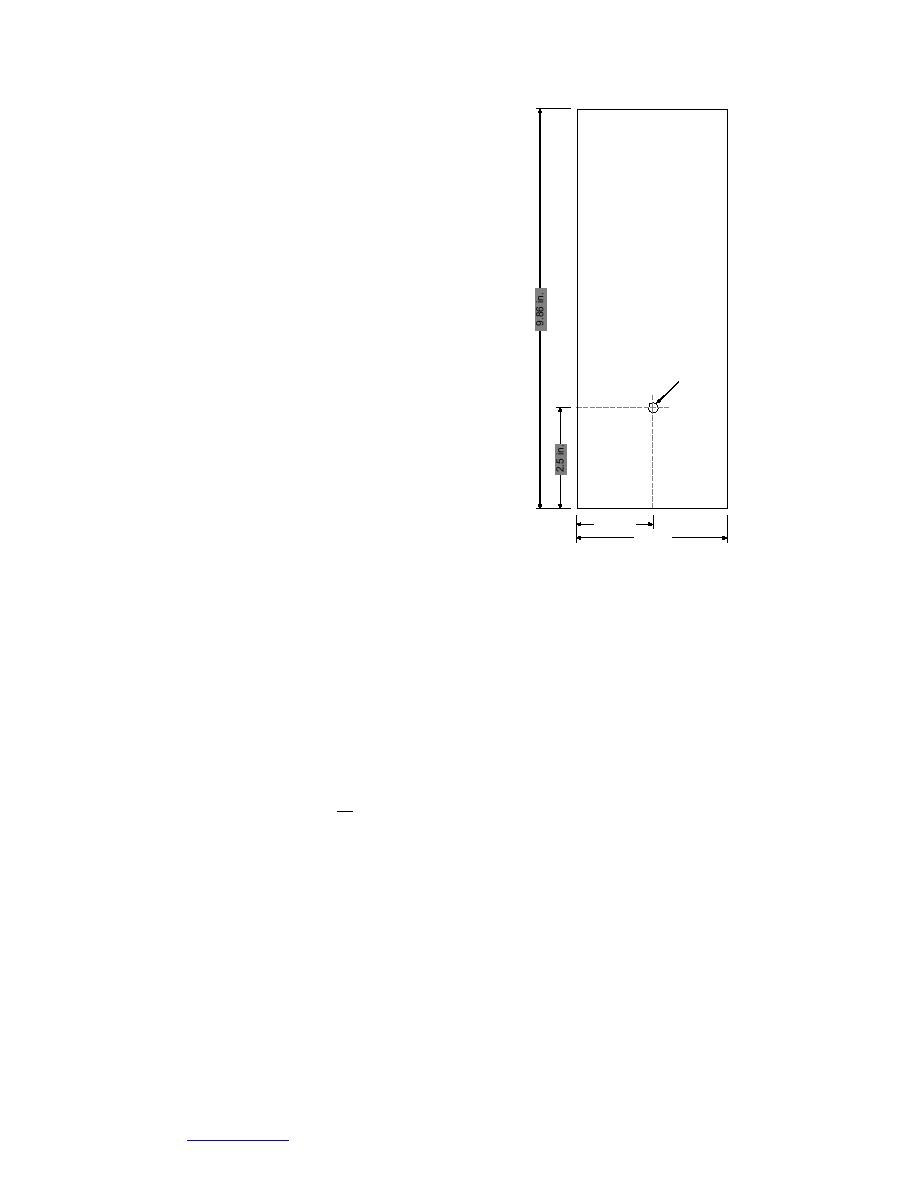
hexagonal cylinders inside a circular cylinder. He
found that the Nu should be based on gap width
while Ra should be based on the radius of the
internal cylinder. This approach indirectly
includes the aspect ratio used by other investi-
gators (e.g., eq 24).
Powe and Warrington (1983) and Warrington
and Powe (1985) investigated cylinders and
spheres mounted in spherical or cubical enclo-
sures. Although their experimental correlations
are probably not appropriate to this study, some
of their observations are of interest. They used
parameter L/rs as a multiplier to the Ra number
in correlations similar to those above, where L is
Diameter
0.25 in.
cal radius based on volume. This parameter is
used to account for the observation that, as the
interior body becomes smaller, the natural con-
vection phenomena can be divided into three
regimes. These regimes are (1) infinite atmo-
sphere solution for large L/rs, (2) enclosure solu-
tions for moderate L/rs, and (3) conduction solu-
1.86 in.
3.72 in.
tions for small L/rs. Additionally, Warrington and
Figure 4. Rectangular enclosure
Powe (1985) determined that for nonisothermal
internal bodies, analyses using the average body configuration of Ghaddar (1992).
temperature compared well with results from iso-
thermal internal bodies.
Ghaddar (1992) conducted a numerical study of a uniformly heated (constant
heat flux) cylinder in an enclosure as shown in Figure 4. Note that the pipe is not
centered vertically, but is in the lower portion of the enclosure. She used a con-
stant wall temperature of 59F, and varied the heat flux into the cylinder; a mean
cylinder temperature was used to calculate the Rayleigh and Nusselt numbers. Her
numerical model did not include radiation. The heat transfer correlations devel-
oped were
0.207
L
NuL = 1.81 RaL
(40)
rp
Nub = 0.604Rab.2083
0
(41)
traveled by the boundary layer on the pipe (half the pipe circumference). The
hypothetical gap width is defined as the difference between the effective radius of
a cylinder that has a circumference equal to the perimeter of the noncircular
enclosure and the radius of the interior pipe. Equation 40 becomes eq 42 after
inserting Ghaddar's test conditions into the L/rp term:
NuL = 3.756Ra 0.207 .
(42)
L
8
Go to Contents



 Previous Page
Previous Page
